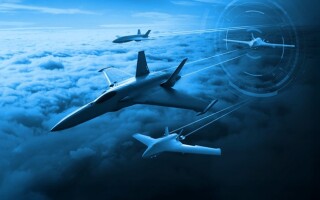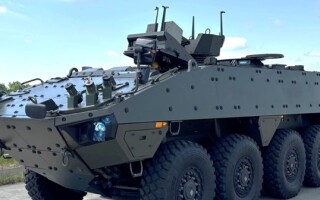DSP goes all digital to boost real-time sensor data analysis
StoryFebruary 20, 2012
Digital electronics take DSP into High-Performance Embedded Computing (HPEC) systems to optimize the fuel/data communications and system functionality/SWaP envelopes.
DSP systems for military signal-processing applications have taken a major leap forward. In the past couple of years, the speed and performance of digital electronics have made it possible to reduce the need for analog front ends in signal-processing applications. This is specifically true in radar systems where high-speed A/D converters can be used to interface directly to the RF front end. DSP systems designers can now build COTS-based High-Performance Embedded Computing (HPEC) all-digital radar systems because digital devices can be directly interfaced to the antenna, capturing sensor data directly without an intermediary RF stage. Instead, the analog sensor signal is delivered directly into the system’s transmit/receive element.
Reducing analog increases capabilities
The functionality provided by large analog systems, such as filters, can now be implemented directly into a high gate count FPGA, essentially replacing a significant amount of analog equipment with embedded digital processing elements. And as the space dedicated to RF front-end processing becomes available, the size of the digital subsystem can increase, boosting the capabilities that can be applied to any specific mission. While radar leads the charge in moving to all digital, other sensor-processing applications will start moving in this direction over time as A/D technology continues to improve.
Compared to mixed legacy analog/digital systems, all-digital architectures are easier to design and program. For system integrators, the signal-processing design challenge has evolved from a hardware integration task into a software programming exercise, as open standard VPX and FMC digital components replace sensitive, complex, hard-to-ruggedize analog components.
Digital boosts real-time sensor-data analysis
The move to digitization enables COTS vendors to build better DSP technologies. With the RF section removed, more DSP boards can be integrated into a given chassis. The resulting HPEC system can support the more intensive algorithm processing demanded by applications such as multifunction radars, sensor fusion, and multitarget tracking. While older embedded DSP systems were often limited in target and location identification capabilities, today’s all-digital DSP systems, without impacting Size, Weight, and Power (SWaP), can identify the target, locate it, image it, and then distribute and downlink its digitized image. Formerly, processed sensor data was downlinked to remote signal analysts who might require days to identify targets and trends of interest. With onboard embedded HPEC systems, sensor-data analysis becomes near real time as the target is imaged, drastically reducing the time needed to turn sensor data into actionable intelligence.
Older single-function, self-contained DSP systems send their data directly to an analyst, as mentioned. Now customers desire systems that can talk to other systems, too. The all-digital HPEC systems that COTS vendors such as Curtiss-Wright Controls Defense Solutions (CWCDS) can now enable comprise multifunction systems that are able to support functionality that formerly needed multiple different analog systems. Vendors are providing the frameworks to exploit sensor data, with Modular Open Systems Approach (MOSA) and Radar Open Systems Architecture (ROSA) middleware that enables HPEC systems to interact with different communication systems or different pieces of equipment beyond the radar.
Writing application software for digital DSP systems can become challenging as missions complexity increases and functions get added. Fortunately, COTS components are becoming more “Lego-like,” leveraging the latest commercial chip technology from laptop vendors and the wireless industry to address these all-digital radar systems. Furthermore, there are far fewer analog engineers than digital engineers, and digital software is more cost effective to develop. Also, unlike analog technology, the key limiter for performance improvements in HPEC system digital electronics is the amount of space available on an FPGA and the CPU’s speed and bandwidth, which historically double every 18 months. Digital COTS components enable integrators to mix and match the high-speed, high-performance, open-standards boards they need to uniquely match the system design and SWaP envelope to their mission demands.
Benefits of all-digital DSP
Two of the greatest costs associated with airborne DSP missions are fuel that limits the flight duration, and expensive satellite uplink/downlink access. All-digital HPEC systems will help system designers better match their specific fuel/data communications envelope while optimizing system functionality to match their SWaP envelope. As the processing capability per watt of these new systems continues to double over time, their mission capability will grow commensurately. As capabilities expand, legacy systems will be increasingly upgraded and converted to all-digital designs.
To learn more, e-mail Steve at Steve.Edwards@curtisswright.com.






